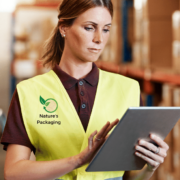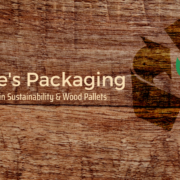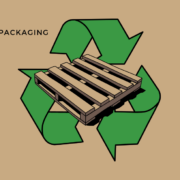Made From Trees-Forest Products Move Markets
Every day, many of the items used in daily life were made possible by forest products industries. The type of forest products in demand the most are various types of lumber. Used to make everything from furniture to home construction to wood pallets and containers; lumber is vital to many industries.
The transportation and logistics industries use wood pallets to move nearly everything. 1.8 billion pallets are in use every day, shipping 90% of the world’s goods. 90% of those pallets are made of wood, making them some of the most important forest product-derived items in the world.
Forest Products and Processes Add Sustainability
Forest products play a major role in the supply chain. Within the subject of climate change and the impact to the environment, the supply chain is under pressure to increase sustainability and reduce carbon emissions. The forest products industry is at the forefront of harvesting and creating renewable resources and products that are reusable and recyclable.
As part of that process, modern logging practices are incorporating sustainable principles to help forests remain healthy and productive. Well-managed forests generate some of the most valuable resources for mitigating climate change and provide useful products that positively impact daily life.
Wood Packaging Logistics and the Supply Chain
Wood packaging used in the supply chain includes pallets, boxes, crates used to transport goods. Well-designed wood packaging keeps goods from being damaged during transit. When heat treated and stamp-certified according to international standards like ISPM-15, wood packaging ensures that goods move seamlessly between countries and facilitates international trade.
Wood Pallets in the Supply Chain
Wood pallets are a core component of the supply chain. Their functionality makes them easy to load and unload via forklifts and pallet jacks. Their durability helps protect items shipped and their design makes them easy to store for reuse.
Wood pallets set the standard for supply chain strength, resilience, and sustainability. 95% of wood pallets are recycled and reused multiple times throughout their lifecycle. Pallets, as a crucial link in the supply chain, are leading the way toward a circular supply chain that eliminates waste.
They are also increasingly popular with consumers for DIY projects as the public recognizes their versatility. When they do reach the end of their useful lifespan, wood pallets are often down-cycled into other useful products like mulch, wood pellet fuel or craft wood.
A current challenge for wood pallets in the supply chain is availability. A consistent supply of quality pallets has always been in demand. When the pandemic hit, so did a broad increase in products shipped via e-commerce. As shipping has rebounded from those initial lock-downs, demand for pallets has exceeded supply.
At the same time, delays in other parts of the supply chain were causing the price of lumber to increase. Industries that use pallets to ship products began to appreciate the wood pallet as a principal component of a stable supply chain.
Forest Products-Above and Beyond
A relatively new arrival in the world of sustainable forest products is mass timber. Mass timber is an engineered product made up of multiple pieces and layers of wood sandwiched together. The result is an incredibly strong and resilient building material that is used in the construction of large buildings that were once built with steel or concrete alone. Mass timber technology is being used to build in Canada and Europe, and is now beginning to launch significantly in U.S. building construction.
Wood Fuel Powering Industry
Burning wood for fuel is nothing new. But the processes used for this age-old forest product are changing. Rather than using traditional firewood for heat in homes, people are turning to pellet stoves.
The pellets used in these stoves are commonly made from compressing wood byproducts that would otherwise go to waste. Wood pellets contain very little water, making them light and easy to handle and transport. They burn hot and clean and are considered to be carbon neutral.
The same pellets can be used to produce steam and electricity.
Biomass consisting of wood and plant products is finding a place as a clean energy option. It can be burned directly or processed into gas or liquid fuels. While not as clean as solar or wind energy, it is vastly cleaner than fossil fuel use and is renewable.
Residential buildings and industries are turning to biomass and other renewable sources for their energy needs.
Forest products surround us in our everyday lives. Renewable forestry practices have created an industry that leads the way in a world rightly focused on sustainability and net zero carbon emissions.




 Woodview Media
Woodview Media

